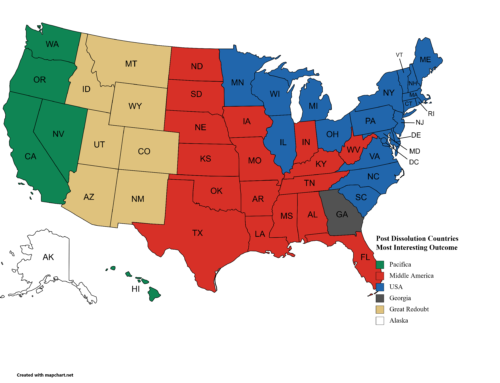It’s better to be right than first.
We’ve talked often here about narratives in the past (see here and here) and why it is so critical for senior leaders to look for evidence when making decisions and developing strategies to achieve corporate objectives. Sunday’s Washington Post featured an article titled “Amanda Knox is innocent. But are the facts enough to change minds?” The piece was a review of the new documentary on Netflix which delves into the details of Knox’s case in an attempt to change the very public opinion formed without any hint of evidence of the facts. This was a public opinion that desired confirmation of peoples’ dark desires to find a villain that fit a particular narrative.
The article also discusses two other documentaries confronting fictional narratives: Denial, which considers a legal case brought by a British man who claimed the Holocaust never happened and The Witness which debunks the narrative that Kitty Genovese’s murder was watched by numerous people who did nothing to avoid getting involved.
So what does any of this have to do with leadership?
Be careful what you chase. In the case of Amanda Knox, the agenda was largely set by a journalist working within the internet news cycle and desire to gain the most clicks on his stories. His sources were one-sided and his stories were not fact-checked. Yet rather than getting called out for his reporting, the response fueled the case into a spiral descent into a very plausible, understandable and truly unjust outcome for Knox. The police and prosecutor ignored evidence because Knox fit their stereotype of an American college girl in Europe.
I’m still surprised by how many business and government leaders chase meaningless or, worse, harmful metrics in support of their own beliefs based on some fictional narrative or a deeply flawed understanding of what drives the bottom line.
We’ve all met the boss who got ahead by wearing out seven cars as a regional salesman. It seems natural for him to push his sales staff to make more calls and make that a metric for evaluation. I have had to sit with clients to discuss the difference between the number of sales calls made and sales closed. I ask if the leader is happy with a 50% increase in calls. Yes, comes the answer. Would you give the salesman a raise? Yes, comes the answer. What if that 50% increase in calls yields no increase in sales? Then comes the blank stare with the leader not comprehending how that could be possible.
In the same way, the police and prosecutors in the Knox case could not believe that any evidence would exonerate her, so they didn’t look for or consider exculpatory evidence.
Good business and government leaders, like good scientists, actively look for evidence that falsifies their theories. Only then can you be somewhat certain (you can never be completely certain) that the path you are charting for your organization’s future is a sound one.
This…takes…time.
If you are chasing Facebook likes or internet clicks or LinkedIn profile views, you’re likely looking to be first rather than being right. Being right takes time because it means figuring out what is important and seeking evidence. That means truth and the openness to that truth, regardless which direction it takes you.
Being a good analyst and a good leader means a lifetime of work to rid yourself of biases in search of truth, which comes from evidence. That takes time. If you are a leader, ask for evidence. Any time one of your subordinates says anything close to “everybody knows,” send him or her out and ask them to come back with actual evidence.
Looking back at historical examples, we often shake our heads and wonder what people were thinking back then. Think about how many people in this country are being exonerated every week of old crimes based on DNA evidence years after trials. British leaders during WWI genuinely believed they could identify the best potential military leaders based on facial features and bumps on the head (phrenology), something which we laugh at today. In multiple examples in war, personal claims of success are usually undermined by photographic evidence (see Tami Davis Biddle’s excellent Rhetoric and Reality in Air Warfare). Even in the present day, legal experts and courts are coming to see that eyewitness accounts are questionable given the variance in how people remember events based on their inherent biases.
This doesn’t mean people are inherently bad or evil. Any college methodology class teaches biases and how all people have them. Working quickly to come to a conclusion will most often lead you to confirm whatever bias you have, as did the prosecutors in the Knox case.
Leadership and strategy take time. It is better to be right than first. When you have a great idea, think about how it could be wrong. Think about how you would attack the premise. Think about what evidence you would need to find to falsify it. Ask yourself whether you’re chasing speed or accuracy. Teach your people to respect evidence by your own example.
Keep thinking…






Thanks for the point on the importance accuracy, especially in this current era of news as opinion rather than facts. Having studied CS Lewis and Chesterton, who valued the search for truth, I feel compelled to share a news story that I am not able to discern true or false; I would appreciate your views on its veracity. A false story may be defamatory and immoral while a true story that is unpleasant may require courage to share.
This story (link below) is about Pope Francis and I’d appreciate your view on its accuracy as can`t tell myself. Thanks
http://sorosfiles.com/soros/2016/08/the-popes-boss.html
Vince, Thank you for writing back.
I am a little wary at this point. Truth isn’t good or bad. It just is. But truth doesn’t need defenders. Furthermore, we need never fear the truth or its implications. Thomas Aquinas said we need never fear the truth because the truth can never lead us away from God. So I am a little uncomfortable not knowing where you are going with this.
Let’s look at the story you sent through the lens of scientific inquiry and the logic of real arguments.
First, what is the likelihood that Soros “owns” the Pope without someone getting that information out? What is the likelihood that Pope Benedict XVI can endure a “major” scandal of having his household staff copying his papers and discussing his major decisions, but Francis could be owned by Soros without this getting out? What is the likelihood that the College of Cardinals and curial bishops (to whom the Pope is actually, if not ultimately answerable) would be unaware of his relationship with Soros and not get the information out. What is the likelihood that serious insiders such as Sandro Magister and Rocco Palmo would be unaware or unwilling to publish genuinely damaging or damning information? Sure, you can find a lot of articles about how Soros has tried to deepen the cleavage in the Church between traditionalists and liberals. However, as Lisa Bourne of Life Site News said: “The Catholic Church has continuously withstood and will always survive more formidable opponents than Soros. But this fact is clearly lost on him, given his history of attempting to nefariously impact the Church by funding groups labeled “Catholic” that oppose fundamental Church teaching, his backing of anti-Catholic causes with the United Nations, and now as seen with the recent leaked document from his Open Society Foundations, his influence on high-ranking Church officials to advance his causes.”
From a methodology standpoint, you would have to ask yourself one of the most important questions of scientific inquiry: What would I have to know or accept in order to believe this to be true?
In this case, you would have to suspend anything you know about the Church. You would have to be ready to accept that the Pope can be bought. You’d have to accept that the Pope is unbound by Tradition and precedence. Remember that when asked whether he was ready to allow women priests, Francis answered simply by stating that John Paul II answered that question definitively and that Francis was in no position to change that decision. When asked if he would allow gay marriage, he answered simply that he was a son of the Church. That says it all. In this case, you would have to believe that the vast and purposely deep layers of Vatican bureaucracy between the Pope and outsiders has a secret back door in which Soros or his messengers can get to Francis without others knowing. Those are all steps that you would have to accept in order to believe that Soros has his people in the Vatican. I’m not ready to accept those inferences as I contend there would be significant evidence.
Just because a member of the Pontifical academy of Sciences is invited to speak at a Soros-funded conference doesn’t make him a Soros insider or plant. I’ve spoken at conferences for groups that I was ideologically opposed to. That didn’t mean I sold my soul to become one of them. Pope John Paul II and Benedict XVI met with leaders of different religions. That didn’t mean they were lessening their Catholicism.
No matter how hard Soros tries to take down the Church, he won’t succeed.
Finally, I am not your spiritual director, so I tread very carefully here. But I would be very cautious about ascribing to God blessings on our country when anyone wins or loses an election. The people voted, not God. He told the Israelites that they didn’t need a king and that He was sufficient. Look how it went for them. I think we are very fortunate to live in a country where people can choose their faith and worship as they wish without being beheaded for it. I come from a country that was under Ottoman rule for 500 years and our churches were destroyed. Those that survived were disguised. I am concerned about the future of this country, but not for the same reason many others are. I’m not hoarding guns and bullets. But I am prepared for a time when the government, the one instituted by men, as our Declaration states, tells us how we can and can’t worship or who we can and can’t associate with. Till then I’ll work to help people learn to think since we no longer teach that in school. Till then I’ll pray. But I won’t worry about who said what and I certainly won’t spend my valuable time watching talk news and get angry about claims that are most likely untrue.
Keep thinking…
Thank you Tom for taking the time to explore this issue. I was aware of the Soros lobbying in the Church and in our country but I agree that the article goes too far in exaggerating Soros’ control; the leap from lobbying a pontiff, who has some Peronista and socialistic Argentinian views, to ownership of the pontiff is not truthful given the insufficiency of evidence in the article. I agree from the last blog that history is sending us immense changes soon. I believe globalization has harmed many people culturally and economically and automation will soon displace many workers. I preferred Trump to Clinton to lead us through these changes and we’ll see what happens. I will check back with you early in the New Year. Best Christmas wishes to you, Brett, and your families.
[…] also asked whether we have moved beyond the point of accepting evidence and being able to change our minds based on evidence. We now live at the beginning of an age in which people must go to great […]